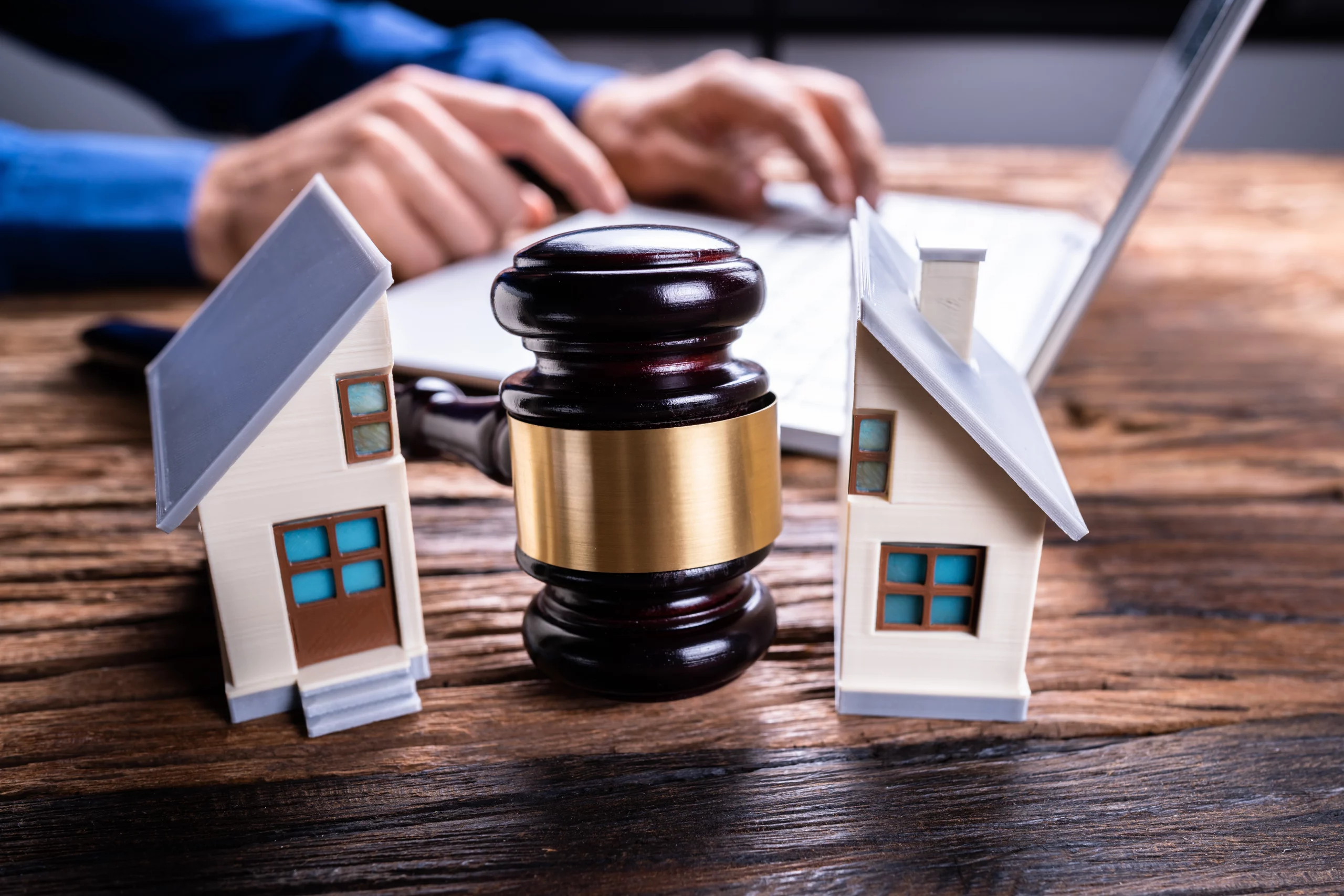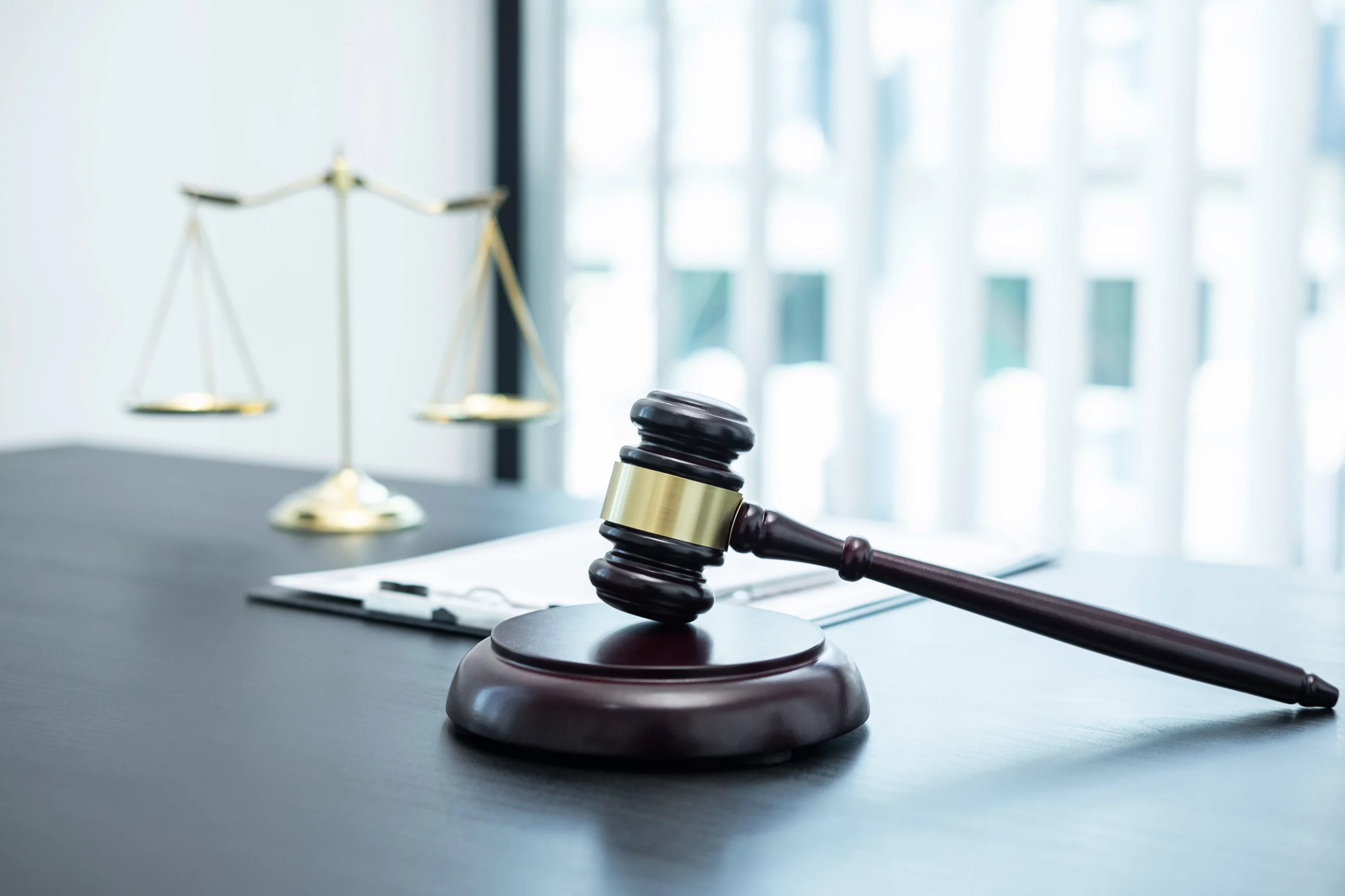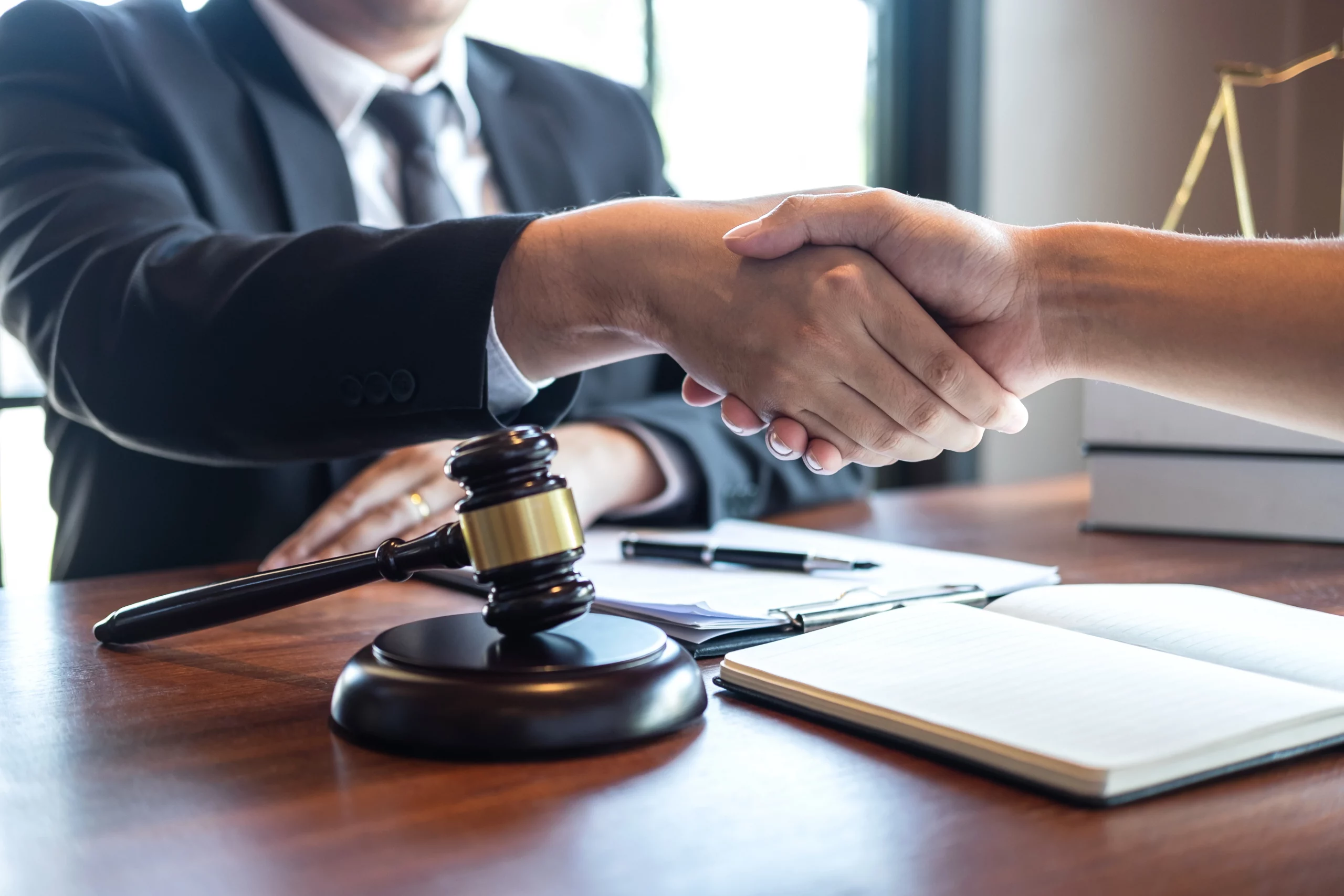Building Collapse Accident Lawyers | Slip, Trip, and Falls
The Best Premises Liability Accident Law Firm
Premises Liability > Accidents > Building Collapse
Since a building collapse may result in many injuries and deaths, it is often a newsworthy event.
If a building were to collapse, it would be obvious who was at responsibility, making the construction company, property owner, or general contractor accountable for any injuries that resulted. Abandoned building collapses on construction sites, injuring or killing employees, are also relevant to this discussion.
An experienced construction accident attorney can assist you, or a loved one get the money you deserve after a building collapse catastrophe.
Warrior Personal Injury Lawyers have a history of representing clients in Colorado who have suffered catastrophic injuries or lost a loved one due to the negligence of another.
If you’re a construction worker who has been injured on the job and would like to discuss your legal options with one of our attorneys, please call our office.
There are a wide variety of causes for the unexpected collapse of a building, including poor craftsmanship, termite infestation, decay, the accumulated weight of snow, ice, or rain, the presence of people or their possessions, explosions, vibrations, and the natural deterioration of the building itself.
Regardless of the root cause, the building’s administrators likely might have avoided the disaster if the right precautions had been taken and maintained. Precautions for natural catastrophes and other potential hazards must be considered during the building process.
Shortcuts are not uncommon to be taken during a building’s design, construction, or upkeep. It takes a thorough investigation, aided by architects and engineers, to determine what caused a structure to collapse.
It also necessitates a law firm with the financial wherewithal to fund an investigation and pursue legal action against those responsible. Please contact us immediately if a defective building may have harmed you or a loved one.
Free Consultation
NO FEE UNLESS WE WIN
The Root Causes Of Building Collapses
No matter how well they’re made, buildings eventually fall apart. A structure made of brick and timber can expect to last for roughly 120 years if properly maintained. The lifespan of contemporary glass and concrete structures is roughly half that of their traditional counterparts. And it’s estimated that the average big-box retailer has a 30-year lifespan before it’s pulled down and rebuilt.
We “don’t build them like we used to” for many reasons, not the least of which is price. Traditional brick residences with masonry constructions are being replaced in Philadelphia and Brooklyn by timber frame structures, which are not nearly as robust but considerably cheaper to construct. The selection of building materials and the setting of other design criteria are affected by environmental impact studies as well.
For various reasons, unexpected collapse can happen to buildings of any age or material. Many building collapses can be attributed to natural disasters and human error. The most common primary causes of building failures in the United States were found to be:
- Design deficiencies
- Construction deficiencies
- Maintenance deficiencies
- lack of maintenance
- Material deficiencies
Impacts from outside sources; foundation settlement; poor soil conditions; weather conditions; wind and snow;
It was revealed that low-rise buildings (such as residences, warehouses, offices, stores, homes, and commercial structures) and multi-story residential and commercial structures saw the highest collapse rates. Notably, the study concludes that the frequency of failures increased over time and that most failures happened within the first 30-60 years of service. The report finds, “This pattern shows that construction failures play a dominating role in shifting failure trends.”
Building collapses were often caused by one or more of the following construction flaws:
- Improper restoration;
- Demolition problems;
- Poor workmanship; unsafe excavation activities;
- Construction delays can be caused by several factors,
- Including nearby excavation activity, underground excavations;
- Problems with temporary structures; and
- Structural defects in permanent buildings.
Since they are often the first responders to a collapse, firefighters have extensive knowledge of the warning indications and physical characteristics of buildings about to give way. As reported by Firehouse.com, an informational hub for firefighters and rescue workers, some of these warning signals include:
- The age of the building and its lack of upkeep
- The occurrence of extreme weather
- Natural disasters
- The introduction of unsafe additions
Disasters such as building collapses, gas explosions, fires, and car crashes into structures are too common.
Collapses And Building Regulations
The purpose of building codes is to ensure the well-being of the building’s occupants and any visitors. There are specific regulations for every stage of construction, from laying the groundwork to installing the final shingles on a roof. Building codes handle structural factors, such as building materials, and characteristics like plumbing, electric, fire safety, lighting, ventilation, and energy use.
Revising building regulations accounts for new developments in building technology and, in some situations, to prevent a repeat of a recent disaster. In America, we revise our construction codes every three years. However, the entire country does not have a unified set of building regulations to follow.
The International Code Council (ICC) establishes minimum standards for safe and sanitary building practices worldwide; however, individual states and municipalities develop their own sets of regulations that are more narrowly tailored to their unique needs.
Construction is regulated not only in new buildings but also in existing ones that undergo additions, renovations, and repairs. All national, regional, and local building codes must be met for these endeavours to be legal. Finding a code violation during a building collapse inquiry might be evidence of negligence.
Avoid Financial Collapse Along With Everyone Else
For more than three decades, Morgan & Morgan has been assisting disaster victims in rebuilding their lives. We have the resources to investigate the reason for a building collapse, pinpoint the responsible parties, and pursue maximum compensation for victims’ injuries and losses in court. If you have any questions about your legal situation, please call or email us today for a free and confidential consultation.
Evaluation Of Your Case, Free Of Charge
Give us the details of your case so we can begin advocating on your behalf. Depending on the specifics of each situation, we take various approaches.
If a building collapse causes injuries, deaths, or even just property damage, many persons may sue (e.g., a building collapses on an adjacent business or parked cars on the street). An investigation must first be conducted to discover the root cause of the building’s collapse. Only when the collapse’s root cause has been determined can those who may be held legally responsible be named.
Disaster Strikes A Building Site
For example, let’s look at the various parties that could be held liable for the recent building collapse in Houston. The Marathon Oil Company headquarters had two workers murdered when the building partially collapsed.
The men’s families filed wrongful death lawsuits against Marathon Oil and various subcontractors, alleging that the companies were guilty in the men’s deaths. The building collapse lawsuit specifically alleges that the defendants failed to comply with safety requirements, monitor and train employees, and provide proper safety equipment. Construction workers, the concrete manufacturer, and the crane provider were all identified as defendants in the lawsuit.
In a construction defect case, the parties typically try to place the blame on each other. The crane business, for instance, claimed that they had been working on another building at the time of the collapse and that the damages were the result of outside forces.
Transferring responsibility for construction flaws is often handled by contractual stipulations outlining who is liable for what. Other parties responsible for the property (including the party leasing the land) may also be held liable, in addition to the general contractors and subcontractors that worked on the project. Once again, the contractual language and contract law in the state where the collapse happens could determine who is actually at fault.
Natural Disasters
Although earthquakes, windstorms, and other natural calamities are often the primary cause of a building’s collapse, they are not always an excuse, especially if the structure does not comply with local building requirements.
For instance, in San Francisco, earthquake-proofing is mandated by law. In addition, residences in Oklahoma should be constructed to resist winds of at least ninety miles per hour; certain municipalities have even stricter requirements.
A collapse can also have occurred because necessary maintenance was neglected. Roofs need to be cleared of snow and ice, for example, in places with a lot of snowfall. A collapse of the building may occur if this is not done.
In Other Cases
A building’s collapse may also be caused by factors outside the construction and maintenance processes. For instance, the gas company or nearby workers could be at fault for a gas explosion; subterranean construction for a new building could inadvertently cause the collapse of an existing building; or a car or plane could crash into a structure, causing it to partially or completely collapse.
The terrorist attacks on September 11, 2011, prompting a large chain of litigation against the City of New York, insurance companies, building owners, airlines, the EPA, contractors, banks, and many more parties, is the last example.
Some of these lawsuits are still being argued in court. Still, at least one judge has concluded that “it is simply incompatible with common sense and experience to hold that defendants were compelled to design and construct a building that would survive the events of September 11, 2001.”
In a nutshell, it is nigh impossible to prevent certain occurrences. Damage claims for such occurrences might be difficult, if not impossible, to pursue in court.
Why Colorado Buildings Collapse
Multiple factors can lead to a building’s collapse. Almost always, there’s someone to blame for the fallout. The following are some of the causes of building collapses:
If the roof hasn’t been maintained properly, heavy rain or snowfall over a lengthy period can weaken it to the point where it collapses.
Bad building construction can result in the eventual collapse of the structure for which it was intended.
A building’s foundation can collapse on persons working on the site and in the area if the construction company is careless.
The building, or at least a section, may collapse if an explosion or fire occurs. There could also be another form of natural calamity that causes the building to collapse,, such as a hurricane, earthquake, or other recent meteorological conditions.
WHAT HAPPENS STRUCTURALLY IN A COLORADO SPRINGS BUILDING COLLAPSE?
The internal structural elements of a building are what bear the weight of the building. When these give out, the building will collapse, pulling the walls in. Everything that may go wrong with the structure will. The City of Colorado Springs usually requires an inspection of the building. However, this is not always done.
Building collapses may not necessarily have to be of the entire structure. Sometimes, a building’s roof can disintegrate while the structure remains to stand, resulting in a collapse with similar outcomes.
The victim of a roof collapse may be crushed by falling debris or may fall through the roof itself. Partially collapsing structures are just as hazardous as fully collapsing ones.
Porch collapses present another risk to construction workers and building owners. Often, porches are added as an afterthought, and the rules and regulations for their construction are disregarded or disregarded altogether.
The Hard Rock Building Collapse
The construction of a Hard Rock Hotel in New Orleans recently suffered a partial collapse. The building’s upper levels collapsed as they were being built. Three people were murdered, and 30 were injured, some quite seriously, in the collapse.
One hundred or so workers were on the premises at the time of the building’s collapse. The extent of the collapse necessitated the demolition of a large portion of the previously built structure.
An inquiry is underway to determine what led to the collapse, but footage taken just before the structure gave way shows that it was already showing signs of structural weakness. Some say the hotel’s developer knew about the structural issue days before the building gave way.
However, construction on the structure continued. Other people have complained that there aren’t enough beams supporting the upper stories.
Many lawsuits were filed against the project’s owners and the builder within a week and a half of the collapse. The common thread across these instances was that the defendants were careless.
However, when more facts arise, most of these lawsuits will be filled with more specific charges. In at least one complaint, it has been alleged that the structural supports were inadequate, that incompetent labour was engaged, and that the concrete was not given enough time to dry.
This building fall received a great deal of media attention. Therefore lawsuits are likely to be brought swiftly.
Comparative Data On Building Collapses
Building collapses are thankfully uncommon in America. Generally speaking, builders adhere to safety rules and utilize better quality materials.
However, building collapses continue to occur regularly. There were three fatalities due to building collapses in 2017. Since building collapses are relatively rare, the resulting damage awards and settlement amounts tend to be substantial when they do occur.
Faqs regarding the colorado springs building collapse
You’ll find answers to some common inquiries about Colorado Springs, CO, building collapse injuries below. We realize that you may still have inquiries even after considering these answers. To that end, we encourage you to contact our law office to schedule a no-cost initial consultation with one of our skilled attorneys.
In Colorado Springs, What May Cause A Building To Fall?
Tornadoes, flooding, hurricanes, and earthquakes are among the most common natural calamities that cause building collapses in Colorado Springs. However, these are not the only potential causes of a building’s failure in Colorado or elsewhere in the United States.
In The Event Of A Building Collapse In Colorado, Whose Fault Is It?
Personal injury victims in Colorado can seek compensation from the building’s designers, builders, owners, and other parties if they are injured in a building collapse.
How Do You Stopp The Collapse Of A Building?
If you inspect the building’s foundation, don’t make major alterations, learn about the site’s construction process, and take measures to protect against earthquakes and other natural disasters, you can avoid building collapse accidents in Colorado Springs.
In Colorado Springs, What Is The Most Vulnerable Part Of A Structure?
Colorado Springs buildings are more vulnerable at corners, pillars, and load distributors.
If A Building In Colorado Springs Is About To Collapse, How Can You Predict It?
Sagging flooring, previous collapses, creaking or other noises, uneven floors or staircases, and fire or flooding damage are warning signs that a structure in Colorado Springs may be unsafe and fall at any moment.
Injury categories from building collapses
Building collapses may result in more serious injuries than other construction catastrophes. Crushing injuries are commonplace due to falling debris and building materials.
Frequently, people get crushed while trying to escape. Some of the possible injuries caused by a building collapse include:
The impact of falling objects can cause serious fractures to the human body. If the fracture is serious enough, the victim may be permanently unable to use a limb. This holds truest when there is a significant crush injury. An amputated limb may be the only option for treating severe tissue loss or infection in extreme cases.
Severe Fractures– A construction worker or bystander walking by may suffer a traumatic brain injury if they are hit in the head by falling debris from a building collapse. A traumatic brain injury (TBI) ranks among the worst types of trauma because it can permanently impair a person’s capacity to carry on with everyday life.
Paralysis: A person can become paralyzed if they are hit in the head by falling debris or if they get a spinal cord injury.
Injuries to the Internal Organs – Injuries that are not immediately visible to the naked eye can sometimes be the most serious. When a building collapses on its inhabitants, the result can be internal bleeding or organ damage from the impact.
Fatal Injuries-Damage Severe Enough to Cause Death A wrongful death suit might be filed on behalf of the family of a construction worker or bystander who was killed in a building collapse event.
International Comparison Of Building Collapse Regulations
A building collapse prompts investigators to scour the scene for clues about what happened. It is common for them to determine that the contractor or building owner disregarded multiple safety rules.
Many laws will be enacted at the federal and state levels to ensure the security of structures. For the most part, these regulations concern the safety and security of the building’s structure. Structures must adhere to all applicable regulations.
This implies they need to be sturdy enough to endure the elements and anything else that could compromise the structure. What kinds of construction materials can be utilized and design criteria must be met are two more aspects that may be specified in the rules.
In most cases, it would be the responsibility of the building’s owners to conduct regular safety checks. A building collapse could have been prevented with more thorough inspections and less reliance on shortcuts.
In such a case, the property owner may be held legally responsible for any injuries you or a loved one sustained within the facility.
How much is your case worth when a building collapses and causes harm?
Even though many factors, such as medical bills, lost wages, pain and disability (only mentioned if not mentioned earlier on the page), affect the value of a building collapse injury case, the sample cases below should give you some idea of how juries, lawyers, and insurance companies value such cases.
You can learn a lot from these examples, but you shouldn’t let them completely dictate how you value your circumstances. Consulting a law company in Colorado Springs that has handled personal injury and workers’ compensation cases would be a good idea.
Injured in a building collapse? Ask for lawyer help in colorado springs right now
Our building collapse lawyers in Colorado Springs at Warrior Personal Injury Lawyers have represented clients in construction injury and workers’ compensation disputes for many years.
To schedule a free consultation with one of our experienced construction accident attorneys, please call us at 719-300-1100 or send us a message through our online contact form.
We will assist you in securing the monetary compensation you need to deal with the consequences of your injuries and get your life back on track.
We do not get paid unless you do, through a settlement or jury award for your injuries, so do not worry about the cost of your initial appointment.

FREE CASE REVIEW
We are standing by ready, willing, and able to help you. You can schedule a free consultation here on our website, or give us a call and talk to us. Whatever you prefer, we will accomodate you!








